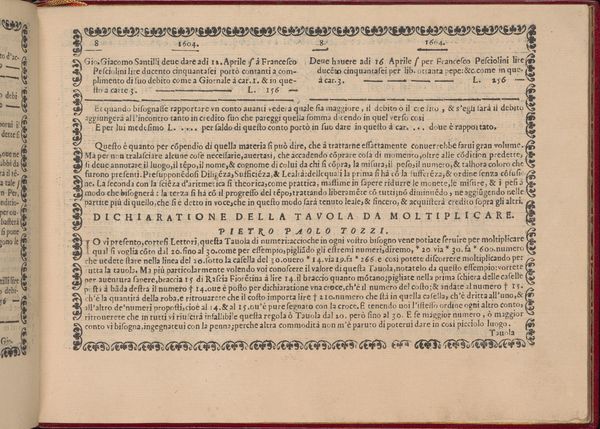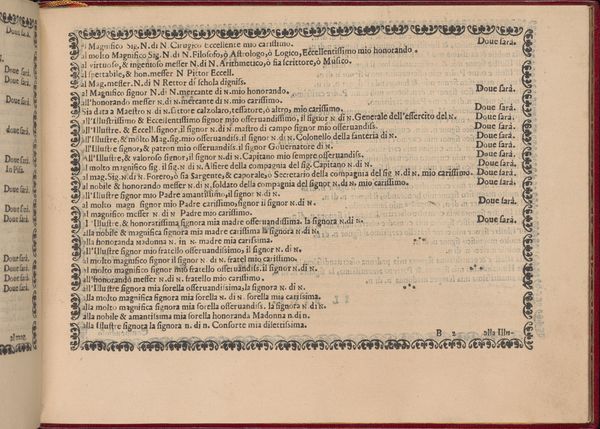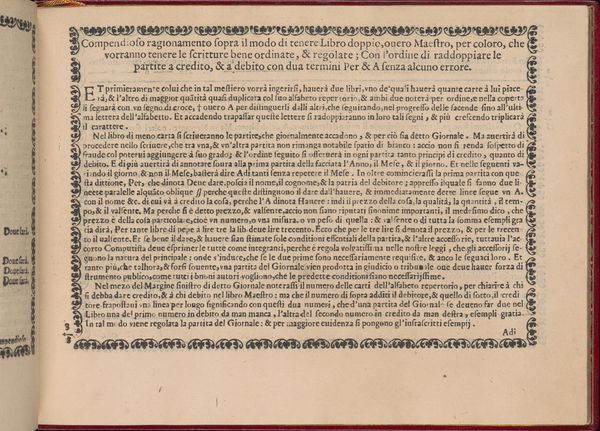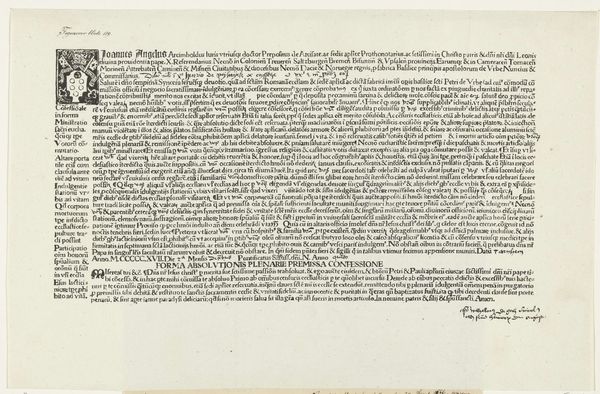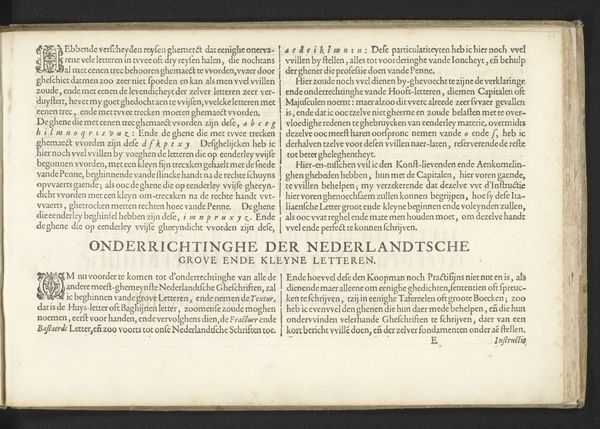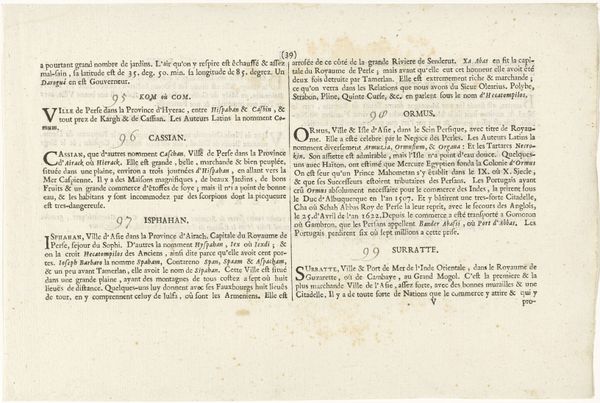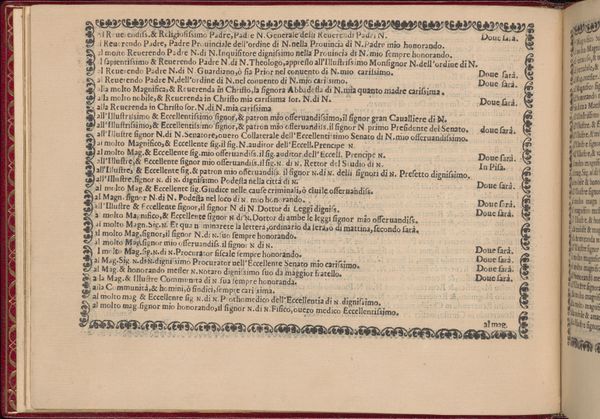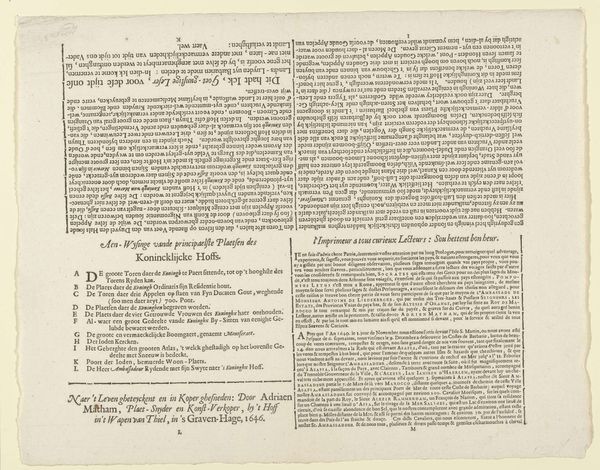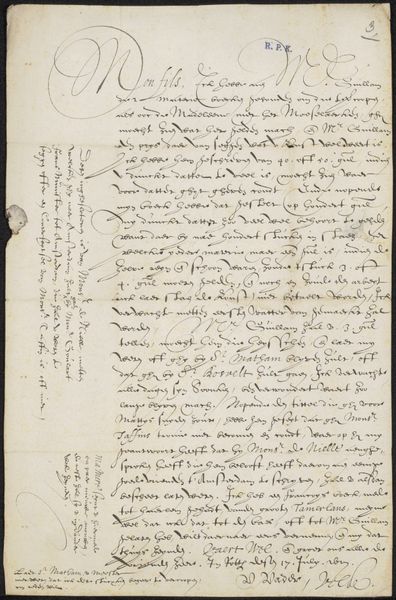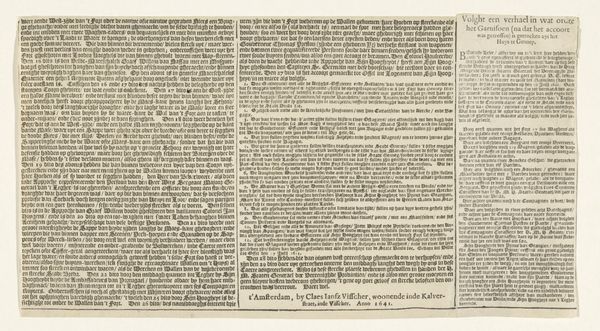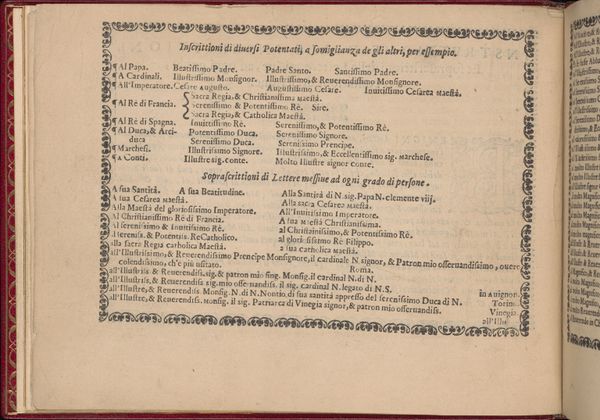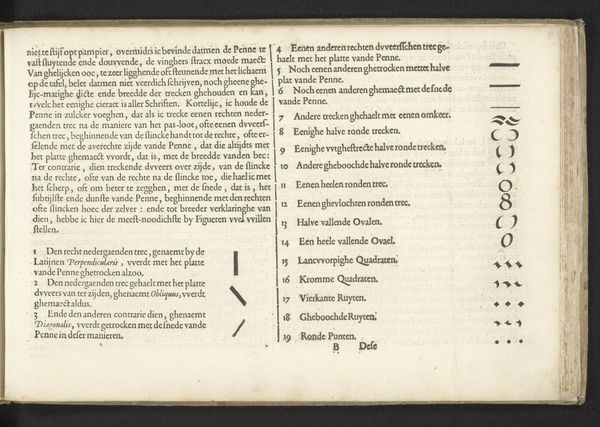
Ghirlanda: Di sei vaghi fiori scielti da piu famosi Giardini d'Italia, page 7 (verso) 1604
0:00
0:00
drawing, print, textile, paper, typography, ink
#
drawing
#
hand-lettering
# print
#
book
#
textile
#
paper
#
typography
#
ink
#
italian-renaissance
Dimensions: Overall: 5 7/8 x 7 7/8 in. (15 x 20 cm)
Copyright: Public Domain
Editor: Here we have a page from "Ghirlanda: Di sei vaghi fiori scielti da piu famosi Giardini d'Italia," created by Pietro Paulo Tozzi in 1604. It's a printed page featuring ornate typography and some decorative elements. I'm immediately struck by the density of the text, it almost feels more like a textile pattern than something to be read. What stands out to you about this piece? Curator: It's fascinating how you use the term 'textile'. Indeed, the material conditions of its production really shape our understanding of this object. The paper itself, the ink, the printing press—all contribute to the work's meaning. It's a commercial ledger, detailing transactions, not fine art in the traditional sense. Does that change how you view it? Editor: It does a bit, yeah. It makes me wonder about the labour involved. Was it considered a skilled craft to produce something like this, with such precise typography? Curator: Absolutely. Typography in this period required a high level of craftsmanship. Consider the labor involved in creating the individual letterforms, setting the type, operating the printing press. It challenges our modern, often romantic, ideas about artistic labor. It encourages us to ask, what social structures, and material limitations or advantage were at play to make possible the original physical object as it is, beyond it's artistic appeal to us now? Editor: So, even something seemingly utilitarian like a ledger page can reveal a lot about the society that produced it. I'm rethinking my initial assumption about what "art" even is. Curator: Precisely! By examining the means of production and the materials, we gain a more grounded understanding of its place in history. Think of this ledger page as a record of not just monetary exchange, but of cultural values and the material realities of early modern Italy. Editor: I never thought I'd find accounting so fascinating. Thanks for highlighting the significance of the materials and the social context; it's given me a whole new perspective. Curator: And you have illuminated, for me, how assumptions about "art" limit its social reach by excluding a wealth of material insight.
Comments
No comments
Be the first to comment and join the conversation on the ultimate creative platform.
